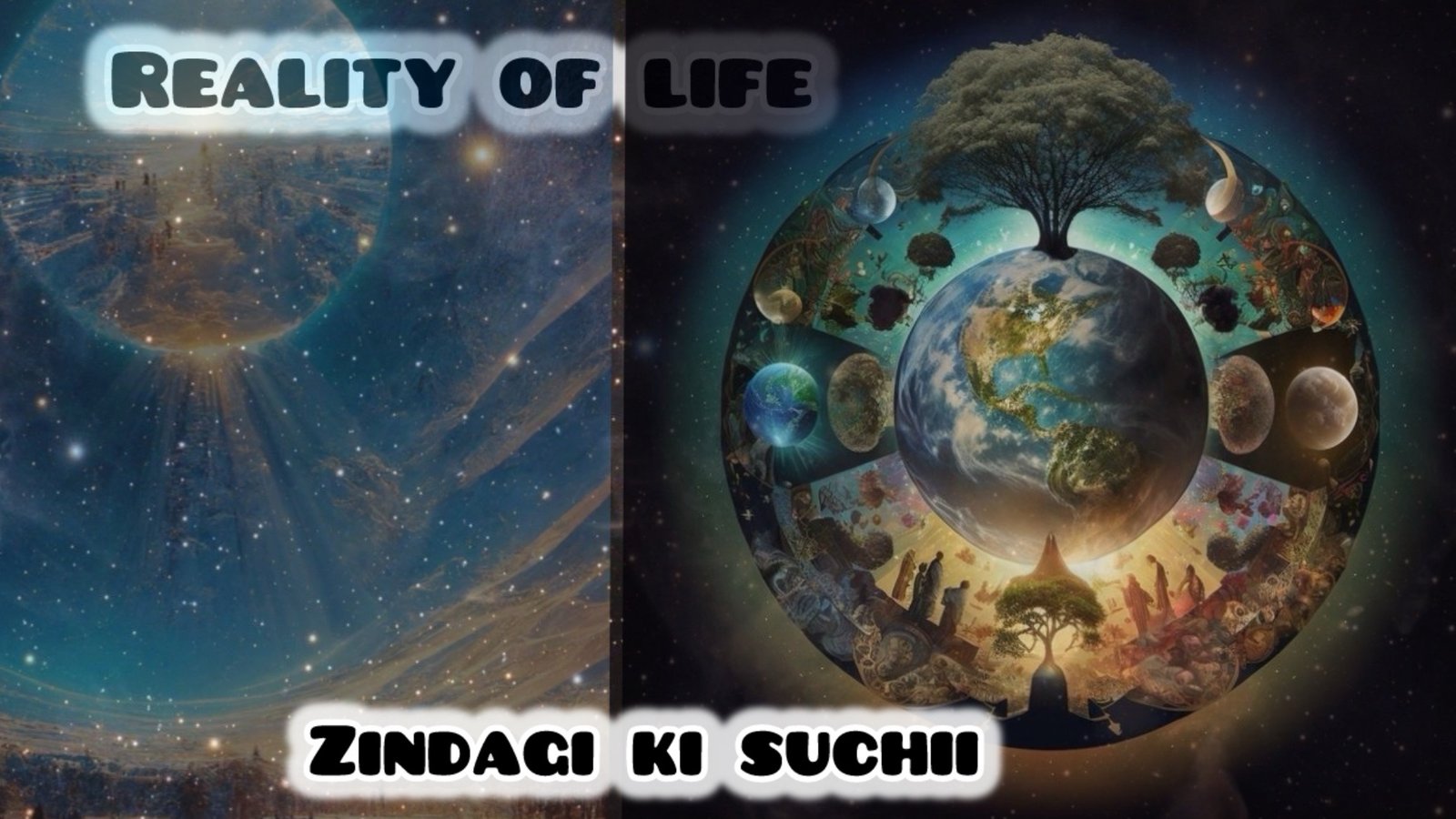Pehli Zinda Cheez Zameen Par: Sitaron Se Zindagi Tak
Zameen par zindagi ek aisi paheli hai jise humne kabhi suljhaane ki koshish ki nai. Pehli zinda cheez kaise bani? Kya yeh khudai jaadoo ka asar tha, ya yeh kisi meteor par safar karte hue aayi? In sawalon ka jawab dene me liye humein karoron saal peechay jana hoga, zindagi ke shuruat tak.
DNA Ka Taluq: Aap Aur Ek Kela?
Yeh ek mazedaar haqeeqat hai: aapka DNA kela ke DNA se takreeban 60% milta julta hai! Kya yeh ajeeb nahi lagta? Lekin jab aap yeh samajhte hain ke zameen par saari zindagi—insaan, kele, khumbiyan, aur bacteria—ek hi aadi se milti hai jo takreeban 3.7 billion saal pehle zinda thi, tab yeh samajh aata hai. Scientists is purani jandar ko LUCA kehte hain, jo ke Last Universal Common Ancestor ka mukhtasir hai.
LUCA pehli zinda cheez nahi thi, lekin yeh aaj ke har zinda makhlooq ka bada-dada hai. Toh, LUCA kaise bani? Aur be-zinda cheezen jaise carbon, hydrogen, aur oxygen kaise zinda cheezon mein tabdeel hue?
Myth Ko Torna: Zindagi Ki Chemistry
Sadiyon se logon ne yeh maana ke zinda cheezen kisi ajeeb “zindagi ki taqat” se chalu hoti hain jo unhein be-zinda cheezon se alag karti hai. Lekin science ke paas kuch aur hi plans thein.
– 1780s: French chemist Antoine Lavoisier ne yeh dhoondha ke zinda jandar mein chemical reactions be-zinda cheezen, jaise ke koyla jalane, se itne alag nahi hain.
– 1790s: Italian doctor Luigi Galvani ne bijli ka istemal karke frog ke paon ko hilaya, dikhate hue ke zindagi jismani taqat ka jawab de sakti hai.
– 1828: German chemist Friedrich Wöhler ne urea (ek compound jo urine mein hota hai) tayyar kiya.
These discoveries blurred the line between life and non-life, forcing scientists to rethink what it really means to be alive.
## **What Makes Something “Alive”?**
To figure out how life began, we first need to define what life *is*. Scientists today agree on four key traits:
1. **Complexity:** Living things are made of intricate molecules like DNA and proteins.
2. **Metabolism:** They need energy to survive, whether from food, sunlight, or chemical reactions.
3. **Boundary:** Every living thing has a barrier (like skin or a cell wall) to separate it from its surroundings.
4. **Replication:** Life must be able to reproduce or make copies of itself.
So, how did lifeless matter meet these criteria and become alive?
## **The Cosmic Connection: Did Life Come from Space?**
When Earth was young, it was a chaotic place, constantly bombarded by asteroids and comets. Some scientists think these space rocks might have brought the ingredients for life to our planet. This idea, called **Panspermia**, suggests that life didn’t start on Earth—it came from outer space!
There’s some evidence to back this up:
– **Amino acids** (the building blocks of proteins) have been found in meteorites.
– Organic compounds have been detected on **Mars** and **Saturn’s moon, Titan**.
– Early Earth’s conditions could have helped these molecules evolve into more complex structures, eventually leading to life.
## **From Non-Life to Life: The First Steps**
Life didn’t just pop into existence overnight. It was a slow, gradual process that took millions of years. Here’s how it might have happened:
1. **Simple Molecules Formed:** Chemical reactions in Earth’s early oceans created basic organic compounds.
2. **Complex Molecules Evolved:** These simple molecules combined to form more complex structures like RNA and proteins.
3. **The First Cells Appeared:** Some of these molecules got wrapped up in protective barriers, creating the first protocells—the ancestors of modern bacteria.
Over time, these simple cells adapted, survived, and multiplied, eventually leading to the incredible diversity of life we see today.
## **The Journey Continues**
Even now, scientists are piecing together the puzzle of life’s origins. Some think deep-sea hydrothermal vents provided the perfect conditions for life to begin. Others are searching for clues beyond Earth, on places like **Mars** or **Europa**, one of Jupiter’s moons.
The story of life is still being written. As we explore space and make new discoveries, we’re getting closer to answering one of humanity’s biggest questions: how did life truly begin?
What do you think? Did life start here on Earth, or did it come from the stars? Let’s chat in the comments! 🚀🌍✨
These discoveries blurred the line between life and non-life, forcing scientists to rethink what it really means to be alive.
## **What Makes Something “Alive”?**
To figure out how life began, we first need to define what life *is*. Scientists today agree on four key traits:
1. **Complexity:** Living things are made of intricate molecules like DNA and proteins.
2. **Metabolism:** They need energy to survive, whether from food, sunlight, or chemical reactions.
3. **Boundary:** Every living thing has a barrier (like skin or a cell wall) to separate it from its surroundings.
4. **Replication:** Life must be able to reproduce or make copies of itself.
So, how did lifeless matter meet these criteria and become alive?
## **The Cosmic Connection: Did Life Come from Space?**
When Earth was young, it was a chaotic place, constantly bombarded by asteroids and comets. Some scientists think these space rocks might have brought the ingredients for life to our planet. This idea, called **Panspermia**, suggests that life didn’t start on Earth—it came from outer space!
There’s some evidence to back this up:
– **Amino acids** (the building blocks of proteins) have been found in meteorites.
– Organic compounds have been detected on **Mars** and **Saturn’s moon, Titan**.
– Early Earth’s conditions could have helped these molecules evolve into more complex structures, eventually leading to life.
## **From Non-Life to Life: The First Steps**
Life didn’t just pop into existence overnight. It was a slow, gradual process that took millions of years. Here’s how it might have happened:
1. **Simple Molecules Formed:** Chemical reactions in Earth’s early oceans created basic organic compounds.
2. **Complex Molecules Evolved:** These simple molecules combined to form more complex structures like RNA and proteins.
3. **The First Cells Appeared:** Some of these molecules got wrapped up in protective barriers, creating the first protocells—the ancestors of modern bacteria.
Over time, these simple cells adapted, survived, and multiplied, eventually leading to the incredible diversity of life we see today.
## **The Journey Continues**
Even now, scientists are piecing together the puzzle of life’s origins. Some think deep-sea hydrothermal vents provided the perfect conditions for life to begin. Others are searching for clues beyond Earth, on places like **Mars** or **Europa**, one of Jupiter’s moons.
The story of life is still being written. As we explore space and make new discoveries, we’re getting closer to answering one of humanity’s biggest questions: how did life truly begin?
What do you think? Did life start here on Earth, or did it come from the stars? Let’s chat in the comments! 🚀🌍✨

